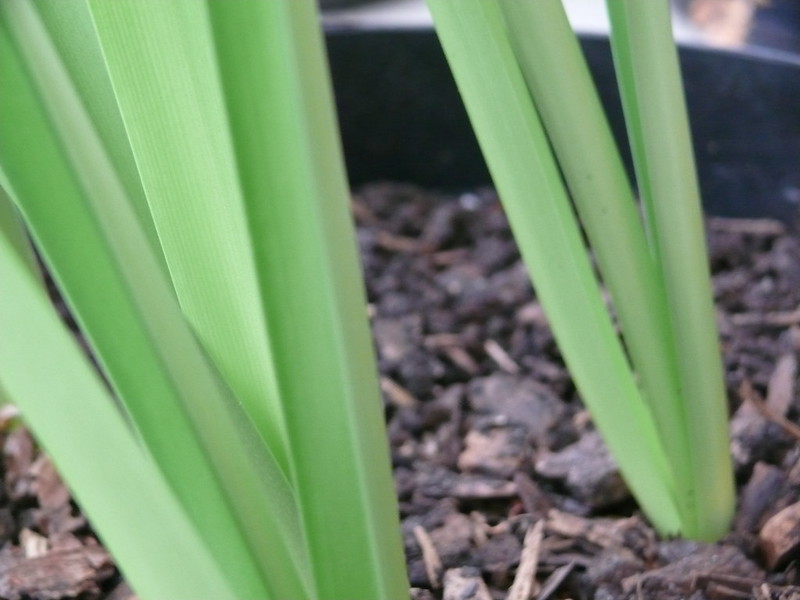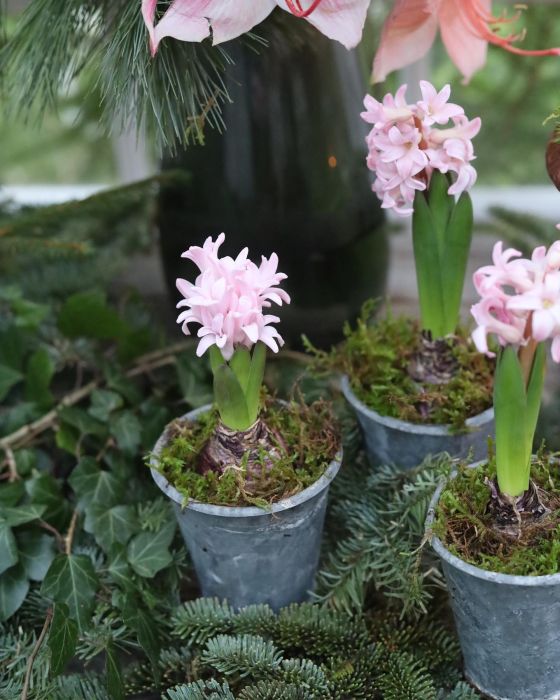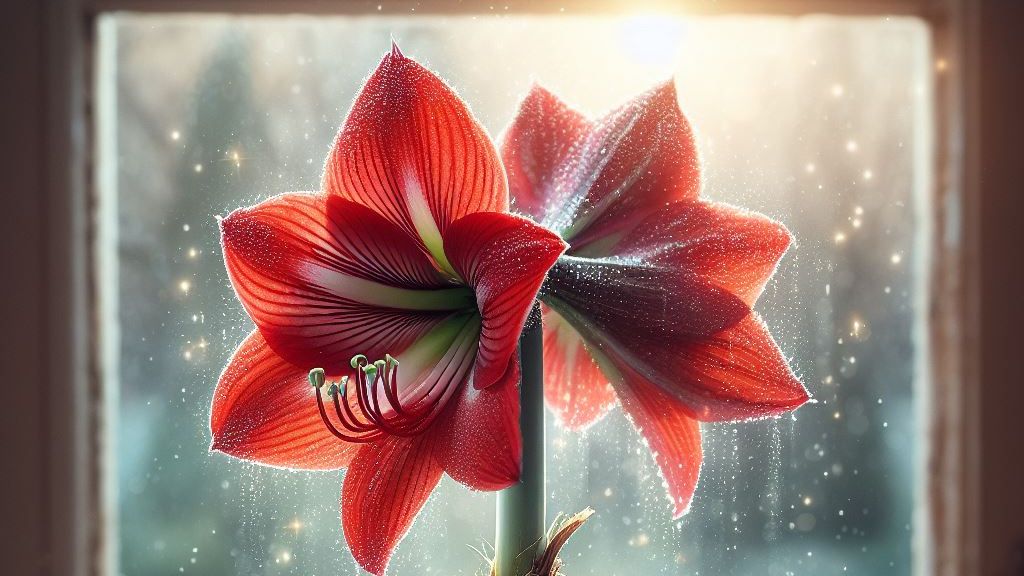Amaryllis plants are known for their beautiful blooms and easy care, adding vibrant color and elegance to homes in winter. Once their flowers fade, you needn’t discard them. With proper care, including the care of Amaryllis, they’ll bloom anew for years, showcasing vibrant colors and large clusters of flowers.
Usually, you can buy amaryllis as potted plants or bulbs around the holidays. Taking care of Amaryllis makes it easy to get them to bloom again next year and repeatedly in subsequent years. It just needs some planning and extra care, like adjusting how much you water them and keeping the temperature right. Since these flowers depend on how much water they get, you can decide when you’d like your amaryllis to bloom next.
Contents
- 1 Life Span Of Amaryllis
- 2 Post-Blooming Steps For The Care Of Amaryllis
- 3 Summer Care of Amaryllis
- 4 Fall Preparations for Blooming
- 5 FAQS
- 5.1 1- How long do amaryllis plants typically live?
- 5.2 2- What should I do after amaryllis finishes blooming?
- 5.3 3- How do I care for my amaryllis during its dormancy period?
- 5.4 4- What is the process to prepare my amaryllis for blooming in the fall?
- 5.5 5- When can I expect my amaryllis to bloom after the fall preparations?
- 6 Author
Life Span Of Amaryllis

The lifespan of amaryllis is quite impressive, spanning many years if they receive proper care. Typically, these plants thrive for 5 to 10 years or even longer when their specific needs, known as the care of Amaryllis, are met. They bloom with stunning flowers each year during their blooming season, which usually occurs in winter or early spring.
By ensuring they receive adequate sunlight, appropriate watering, occasional fertilization, and the right environment, amaryllis bulbs can continue to bloom and bring joy for several years.
Post-Blooming Steps For The Care Of Amaryllis
Caring for amaryllis after its blooms fall involves three distinct stages: nurturing the leaves until the end of the summer, allowing the plant to rest during fall, and fostering regrowth for a new bloom from late fall into the early or middle part of winter.
How you care for your amaryllis also varies based on whether you’re aiming for specific timing, such as for a holiday display, or allowing it to naturally bloom again. These plants require a post-bloom care routine that focuses on nurturing the bulb to ensure it stores energy for future growth and flowering cycles.
1-Deadheading and Trimming
Once the flowers begin to wilt and lose their vibrancy, it’s time for a little grooming. Use clean, sharp scissors to remove the spent flowers. Trim the flower stalk back to about 2 inches above the bulb. This prevents the plant from expending energy on seed production, directing it instead towards the bulb.
2-Sunlight and Watering
After the flowering phase, maintaining a healthy growth environment is crucial. Keep your amaryllis in a bright, sunny location indoors. Natural light is essential for photosynthesis, allowing the plant’s foliage to continue producing energy for the bulb.
As for watering, ensure that the soil remains slightly moist but not overly wet. Overwatering can lead to bulb rot, so it’s crucial to strike a balance. Water the plant when the top inch of soil feels dry to the touch.
3-Fertilization
During the post-blooming period, your amaryllis can benefit from a little nutritional boost. Feed it with a balanced liquid fertilizer every 2-4 weeks. This helps replenish the nutrients in the soil, supporting healthy bulb growth and ensuring a robust flowering cycle next time around.
4-Sleep Time for Amaryllis
As summer arrives, your amaryllis needs a break—it’s called dormancy, like a plant’s sleep. Here’s how to take care of your amaryllis during this time.
First, start watering less as the leaves begin to fade. This is an important part of the care of amaryllis during its dormancy. Then, find a cool, dry spot for your plant. Think of it like giving it a summer vacation! Taking care of the amaryllis includes providing it with the right environment for its rest. Don’t give it any plant food now; let the bulb gather strength for its next big show of flowers.
Remember, giving your amaryllis proper care during its ‘sleep time’ means it’ll be ready and fresh for its beautiful blooms later on.
Summer Care of Amaryllis

During summer as it is sleep time for amaryllis, they need a different approach to thrive. The care of amaryllis during the summer requires a tailored approach to support its dormancy period. As the plant takes its ‘sleep time,’ reduce watering gradually as the foliage starts to fade.
Find a cool, dry spot for the amaryllis, allowing it to rest without disturbances. This mimics its natural habitat and aids in its rejuvenation. Refrain from fertilizing during this period as the plant conserves energy for its next blooming cycle.
Monitoring for any signs of disease or pests is also essential during this phase, ensuring the bulb remains healthy and ready to flourish when its active growth phase resumes. Courtesy for the image above belongs to Arria Belli.
Fall Preparations for Blooming

Image credit:ranli_
As fall arrives, it’s time to wake up your amaryllis from its summer break to prepare for the upcoming bloom.
1-Resume Watering
Start giving it a bit more water to help it start growing again. This change tells the plant it’s time to stop resting and start growing.
2-Provide Sunlight
Take care of Amaryllis in the fall by placing the plant in a sunny spot and resuming fertilization to support vigorous growth.
3-Blooming period
With proper care of amaryllis, they should produce buds and blooms in late fall or winter, delighting you with another spectacular floral display.
Once you resume watering and provide sunlight, your amaryllis typically takes around 6-8 weeks to produce buds and blooms, usually delighting you with another spectacular floral display in late fall or winter. With proper care during this period, your amaryllis will be poised for a vibrant showcase of flowers.
FAQS
1- How long do amaryllis plants typically live?
Amaryllis can have an impressive lifespan, thriving for about 5 to 10 years or even longer when provided with proper care, including adequate sunlight, watering, fertilization, and a suitable environment.
2- What should I do after amaryllis finishes blooming?
After the flowers fade, taking care of Amaryllis involves a few steps. Trim the spent flowers, keep the plant in a sunny spot indoors, water it carefully (keeping the soil slightly moist), and give it fertilizer now and then to help the bulb grow.
3- How do I care for my amaryllis during its dormancy period?
Amaryllis enter a dormancy phase, similar to a plant’s sleep, during summer. Reduce watering gradually as the foliage fades, find a cool, dry spot for the plant, refrain from fertilizing, and monitor for signs of disease or pests to ensure the bulb remains healthy and ready for its next blooming cycle.
4- What is the process to prepare my amaryllis for blooming in the fall?
As fall approaches, gradually resume watering to signal the plant to start growing again. Place the plant in a sunny spot indoors, resume fertilization, and with proper care, expect buds and blooms to emerge in late fall or winter, usually within 6-8 weeks after resuming care.
5- When can I expect my amaryllis to bloom after the fall preparations?
Typically, after resuming care in fall, with proper care of Amaryllis, it takes around 6-8 weeks for amaryllis to produce buds and blooms, showcasing another spectacular floral display in late fall or winter.
Taking care of Amaryllis after it blooms involves understanding the plant’s natural growth cycle. By providing adequate sunlight, balanced watering, occasional fertilization, and allowing for dormancy, you’re setting the stage for a repeat performance of its beautiful blooms.
Remember, each step in post-blooming care contributes to the overall health and vigor of your amaryllis, ensuring its beauty graces your home year after year. Enjoy the journey of nurturing this stunning plant, and anticipate the reward of its breathtaking flowers when the blooming season returns.

